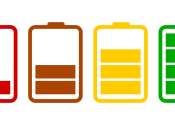Researchers use lead recycled from car batteries to make photodetectors
As lithium-ion batteries continue to decrease in price, they are quickly replacing the lead-acid batteries traditionally used in cars and other vehicles. This is creating a sudden abundance of used lead-acid batteries, which ...
Feb 2, 2023
0
17







